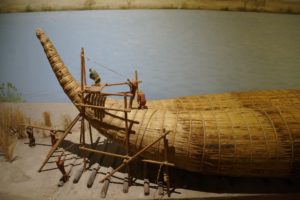 It’s true that the Athenian navy was known in the ancient world as being one of the best. However, the navy was developed fairly late in the ancient history of the city-state. The city-state developed the navy after the First Persian Invasion in response to the fear of civilians that the Persians would return. They were correct, and the navy was ready to eventually defeat the Persian Empire in the legendary Battle of Salamis. Here’s more information:
It’s true that the Athenian navy was known in the ancient world as being one of the best. However, the navy was developed fairly late in the ancient history of the city-state. The city-state developed the navy after the First Persian Invasion in response to the fear of civilians that the Persians would return. They were correct, and the navy was ready to eventually defeat the Persian Empire in the legendary Battle of Salamis. Here’s more information:
Vessels of the Athenian Navy
The Athenians constructed long, narrow ships from wood, a material capable of floating in water. They relied upon ocean currents, the force of the wind, and the labor of teams of oarsmen to power their vessels. Naval ships usually carried limited supplies aboard, so the fleet stopped frequently along the shore to camp and restock their supplies.
The Greek historian, Thucydides, reported that a type of multi-level warship called a “trireme” eventually became one of the most powerful weapons used by the city-state of Athens.
Originally developed from Phoenician and Corinthian designs, a trireme maintained three rows of oars to help optimize its speed. Some triremes served mainly as transport vessels. These ships might carry horses or groups of armed soldiers called “hoplites” to distant locations, for example.
During naval battles, a trireme captain would frequently use the front of his vessel to ram and sink smaller boats. Sometimes a trireme would move next to an enemy ship so an armed Athenian boarding party could attempt to capture the opposing vessel.
Notable Battles Fought by the Navy
Athens developed a strong navy during its struggle against the Persian Empire. During the Battle of Marathon in 490 BC, Athenian soldiers helped halt an invading army from Persia on the Plains of Marathon. An Athenian politician named Themistocles rose to power soon afterwards.
He urged Athens to construct a large fleet of 200 triremes in order to turn back any future Persian military force at sea. A second invasion occurred. Athens, which at the time allied with Sparta, scored important victories against Persia in two naval battles in 480 BC – Artemisium and Salamis.
Its fleet would later help Athens maintain alliances opposing Sparta. However, during the Peloponnesian War, Athens suffered the destruction of its naval forces in the Battle of Notium in 406 BC. and the Battle of Aegospotami in 405 BC. Although Athens eventually rebuilt its fleet, it never again enjoyed such a predominant position as a sea power.
The Risks of Sailing
Building and maintaining an Athenian naval vessel involved considerable expense. Usually, wealthy businessmen sponsored warships and also served as the ship captains. This role bestowed prestige upon prominent Athenian families. However, it required significant sums of money to pay for a ship and a crew. Eventually, many naval sponsors formed partnerships or committees to help share the cost of financing the Athenian navy.
During naval battles, everyone aboard military vessels encountered considerable physical dangers. Wooden warships stood a high risk of catching fire during armed conflicts. They also sometimes sustained damage at sea from unexpected storms. In pitched naval engagements, Athenian seamen risked drowning or becoming enslaved prisoners.
It’s true that the city-state of Athens developed a reputation as a naval power in the ancient world. Its fleet fluctuated in strength over the course of time. Yet more than many other early city-states in Ancient Greece, Athens relied upon a strong navy to defend itself from invasion.
Source: